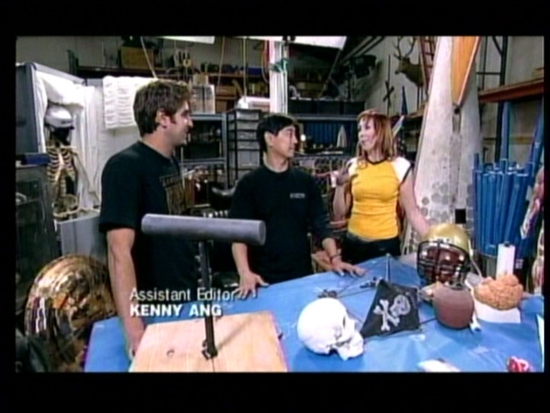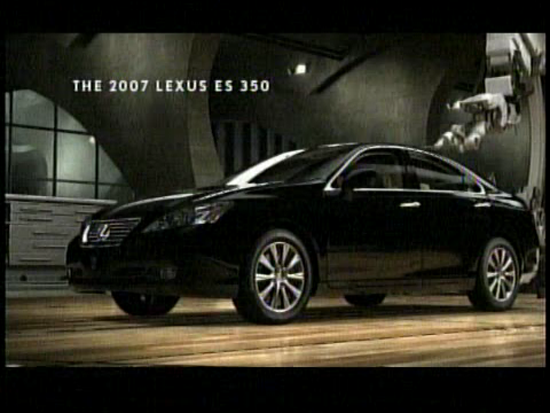TV Tuner Comparisons
How does the NVIDIA DualTV MCE compare with the ATI Theater 550 Pro and All-In-Wonder series of cards? We'll start with power consumption, and we tested each of the three cards at three different states: while the system is idle, while watching live TV, and while recording live TV. Here are the results.| System Power Draw | |||
| Idle | Watching TV | Recording TV | |
| NVIDIA DualTV MCE | 162 | 179 | 189 |
| ATI MSI Theater 550 Pro | 159 | 170 | 175 |
| ATI X1800 AIW | 154 | 172 | 172 |
For reference, the power draw of the system without a TV tuner card installed (excluding the AIW) is 145 Watts. We used an X1800 GTO for the main graphics card with the DualTV and Theater 550 cards, in order to keep the power draws as close as possible to that of the AIW card. We can see from the table that the Theater 550 and AIW draw less power than the DualTV while watching and recording live TV, which makes sense given the DualTV's ability to record two sources as opposed to the other cards' one.
Something else we're interested in looking at is channel switching speed between these three cards, as this is something that can vary between different TV tuner cards. The type of tuner on the card can affect this, and all three of these cards use silicone tuners, which can be slower than analog ones, but take up less space on the board. Interestingly, we found that the AIW had the fastest channel switch time at about one second. The Theater 550 had the slowest channel switch time at about three seconds, and the DualTV MCE was slightly faster than the Theater 550 at about 2 and a half seconds. While three seconds doesn't sound like a very long time at all, it can be a very annoying delay if you like channel surfing.
Between these three TV Tuners, there are some major differences aside from power and channel switching speed. Of course the AIW is a much different solution than the other two in that it is a complete 3D graphics card with a built-in TV tuner. The DualTV and Theater 550 are stand alone TV tuners meant to operate alongside a separate graphics card. Having a graphics card and TV Tuner combined can be good or bad, depending on the personal preference. Some people would rather have the freedom of being able to switch graphics cards while keeping the same TV tuner, while others may prefer the combination of the two in order to keep the extra PCI/PCI-E slot open.
Note that the Theater 550 is available in both PCI and PCI-E X1 versions; at present, it is the only PCI-E TV tuner on the market. Also, the X1800 AIW is a very large part and wouldn't fit very well in a compact system, though to be fair ATI offers AIW cards in a wide range of performance and size. One more thing to note about the AIW cards is that they don't have MPEG-2 encoding in hardware, which means they won't work with Windows MCE. The Theater 550 Pro and NVIDIA DualTV include this feature and work fine with MCE 2005.
The Theater 550 Pro is much more similar to the DualTV MCE, with the major difference being the ability to only record one source as opposed to the DualTV's two. Coupled with Windows MCE, the DualTV's capabilities and ease-of-use outweigh those offered by the Theater 550 Pro and it's included PowerCinema 3 (or 4, depending on which T550 card you purchase) software, but the fact that the DualTV MCE doesn't include any other software is a problem.
Below are some screenshot captures of each of these cards' live video for image quality comparison.
NVIDIA DualTV


ATI Theater 550 Pro


ATI X1800 AIW


We can see that there doesn't seem to be much difference between the quality of the DualTV MCE and the Theater 550 Pro, but with the AIW, the image looks a little sharper than the others. This is especially noticeable in the writing on two of the images. Overall though, the differences aren't that great and all of these cards provide good quality video with live TV. Unfortunately, HDTV isn't supported for any of you that want that feature, but of course the number of HD broadcasts and channels is still significantly lower than the number of standard analog channels.
A simple screenshot doesn't always convey quality as well as a video, so we have also created a BitTorrent share with video samples from the three cards. Download the torrent file, and then use your favorite BitTorrent client. Total size of the videos files is 22.3MB. Note that we have the original MCE generated file for the DualTV as well as a high quality re-encode to standard MPEG-2. (The DVR-MS extension doesn't work with all video players, but it works with WMP10.)










68 Comments
View All Comments
JarredWalton - Friday, May 19, 2006 - link
One more reason to use Firefox. :) Seriously - on most sites and forums (including this one), you don't lose the typed text when stuff like that happens. My suggestion if you want to use IE is to always copy the entire post when you're done, just in case. If it's a short post, no problem, but if you just typed a couple long paragraphs you probably want to exercise a bit of caution.Honestly, I'm not sure why you get timeouts for stuff like that (OMG - he hasn't posted in 15 minutes! Better timeout...), but it happens on most/all other forums I've been to as well.
Trisped - Sunday, May 21, 2006 - link
I get that error hitting reply and post comment about 50% of the time. 15 min time out seems posible, but it wouldn't make sense that I log in, open a bunch of windows, read for 15 min, try to post a reply, refresh, then post, read the nest new item, and have to refresh the browser again.For me it isn't such a big deal, as any important post is copied to the clip board first anyways.
Justin Case - Friday, May 19, 2006 - link
Anandtech's articles are worse than Tom's Hardware, these days. To compare the tuner quality they use completely different video sources! This is just too stupid to be true. It's like comparing two cars by driving one on a racing track and the other in a city, and then saying "the car driven in the city seems to be a bit slower". DUH!Anandtech's articles about RAID and storage have been bad for a long time, but at least the graphics / video articles used to have some vague credibility. This one really is just something to fill the space between the ads...
Not worth the bandwidth.
goinginstyle - Friday, May 19, 2006 - link
A lot of us in the office thought the Seagate review yesterday was very good and a lot better than what was published in the past. It certainly was better than any review on web so far about the 750GB drive with most of the sites completely missing the sata150 jumper issue and not even describing perpendicular recording. It was nice to see benchmarks besides hdtach and then declaring how fast a drive is because of burst speeds. The RAID 0 could have been dropped but at least they tried to shut some of us up about not having it. The issue with the video cards has been the lack of reviews. The Oblivion video card article was actually one of the best around but we need more like it. The motherboard section has been steady and strong lately. I do not think Tom's is better in that case at all.
As for this article-
The lack of the same images for comparison was a definite error, probably the biggest one that was made or could be made.
CPU utilization needed to be included along with a Happauge card.
TV antenna was not tested nor display out to a monitor or HD capable set.
FM tuner was not really mentioned or tested.
I am probably way off base on this one but does PureVideo work with this card for playback from external sources?
Was the article for beginners? It probably was and as such except for the error in image comparisons it was actually okay. Nobody has mentioned it yet but NVIDIA seems to have produced a nice card. It would be nice to see it put to more use and maybe they will come back and update this review.
JarredWalton - Friday, May 19, 2006 - link
In regards to the comments about the lack of depth on this review, we've had two reviews in the past that looked at the Theater 550 card, with http://www.anandtech.com/video/showdoc.aspx?i=2393">one of those reviews comparing it to a Hauppauge card. Our conclusion in that review, which was done almost a year ago, was that the Hauppauge and ATI cards are the best two analog tuner cards on the market. The conclusion is that they basically are equivalent in terms of quality. What that means is that any new review only needs to really compared to one of those cards, and if quality is pretty much equal, everything is good.The NVIDIA DualTV MCE is indeed equivalent to the ATI card. The advantage is that it has dual tuners, which is something you can't get from ATI, but of course the Hauppauge PVR-500 offers that feature as well. There are no high-quality analog TV tuners that will also do HDTV, so I personally find it difficult to do a lengthy article dwelling on the best analog tuners when at best all of them are vastly inferior to HDTV. As I mentioned in my http://www.anandtech.com/multimedia/showdoc.aspx?i...">HTPC – TV Tuner Reviews article, getting the best of both worlds (especially in areas that have poor OTA reception) is a difficult and frustrating task.
If you only need one TV tuner, getting an ATI Theater 550 or a Hauppauge PVR-150/250/350 is a good idea. If you want to get a dual tuner setup, you can either purchased two of the above cards, or go with the NVIDIA DualTV or Hauppauge PVR-500. All of them are very similar in terms of performance and functionality. All of them are hardware-based encoders (as far as I'm aware), so CPU usage should stay below 10%, perhaps 25% if you were recording two channels at once.
Hopefully that clarifies things a bit. I personally am still waiting for the ideal TV tuner card, but I'm really not sure such a thing exists. I want dual tuners, analog and HDTV support, high-quality analog encoding, support for QAM decoding, the option to get the card in either PCI or PCI express format, and CableCARD support as well. I'm quite sure that such a card does not exist, and in fact it may never exist. :-(
Sunrise089 - Friday, May 19, 2006 - link
One thing I don't like seeing is that 99% of the time I can judge the quality I'm about to read by just looking at the author's name. I won't say who is good and who isn't, but it really suggest poor oversight and/or quality control. I know some authors will write better or have more vision for the article, but that would be true anywhere. At Gamespot.com they have reviews by like a dozen authors, but they almost all come out the same because they conform to a specific standard. At AT it seems obvious that different authors have widly varying levels of quality, and noone proof-reads the articles and tells the authors that they need to put in some more work.With other products (video cards) I can see the urge to have the review up fast so the readers don't rush to other sites, but this product isn't exactly the highest profile. I actually laughed out loud when I saw the image quality comparison shots were from DIFFERENT IMAGES.
nullpointerus - Friday, May 19, 2006 - link
Actually, I thought the article was quite good. IMO the problem is that the article was written for the wrong audience. There are the HTPC-nuts like myself who really research their buying decisions and tweak their software to make it work just so, and then there are the quickie-$29-tuner people who expect an all-in-one solution that just works. I think the article was written for the latter - hence the lack of in-depth comparisons and the confusion about lack of bundled software.mindless1 - Saturday, May 20, 2006 - link
Don't you have that a little backwards? The people who buy the expensive cards are generally those who do not tweak much of anything, because they're accepting the default hardware encoding, hardware that is wasted if someone doesn't want to do one-pass straight to MPEG2. It is those who buy the expensive card that want to not think about it, to just "have it work".Those buying the other cards, some are just cheapskates, others have legitimate rationality that it's a bit silly to pay for mid-quality hardware encoding unless you ONLY want MPEG2. MPEG2 is becoming a bad choice, if you have a real HTPC. Quality:size worse than MPEG4 and loss too high for editing/re-encoding purposes. It's best if your old standalone DVD player is the playback device.
nullpointerus - Saturday, May 20, 2006 - link
No, it's not backwards. I'll repeat it. There are people who are interested in spending as little as possible and just stick with whatever bundled TV/PVR app the manufacturer has thrown in, and then there are people who want the best possible experience and are willing to spend a little more time and money to pick out different PVR software, compare cards, swap decoders, and so on. Obviously, that doesn't cover the whole range of users, but it's not supposed to; the contrast is merely there to point out the decidedly different audiences for which this article might have been written.And if your logic were true in the general case, you couldn't explain why audiophiles - who are incessant tweakers - will pay upwards of $1,000 for a set of cables. But then again, I don't think anybody can explain that to my satisfaction. ;) In any case, it does happen, so your viewpoint isn't exactly all-encompassing, either.
mindless1 - Sunday, May 21, 2006 - link
Ok, so I still disagree. Those who have no idea what they're doing will tend to buy a hardware based card, because they don't KNOW the differences or benefits, they don't realize that if they want a superior result then the $ for a hardware compressor card was wasted money.I AM an audiophile and we could go on and on for years about overpriced cables, and it just isn't applicable here (though personally as an audiophile, IF I were to go for premium cotton sleeved/silver cabling, I would make it myself).
It is true that there are some casual users who don't know a lot about cards and only see the cost, or those that only watch TV for the most part. Then again there are also those with the most experience and will laugh at anyone recording to MPEG2 unless the sole goal was to record it straight to a DVD. BTW I have over a dozen capture cards, though not those in this review and I don't feel I'm missing out.